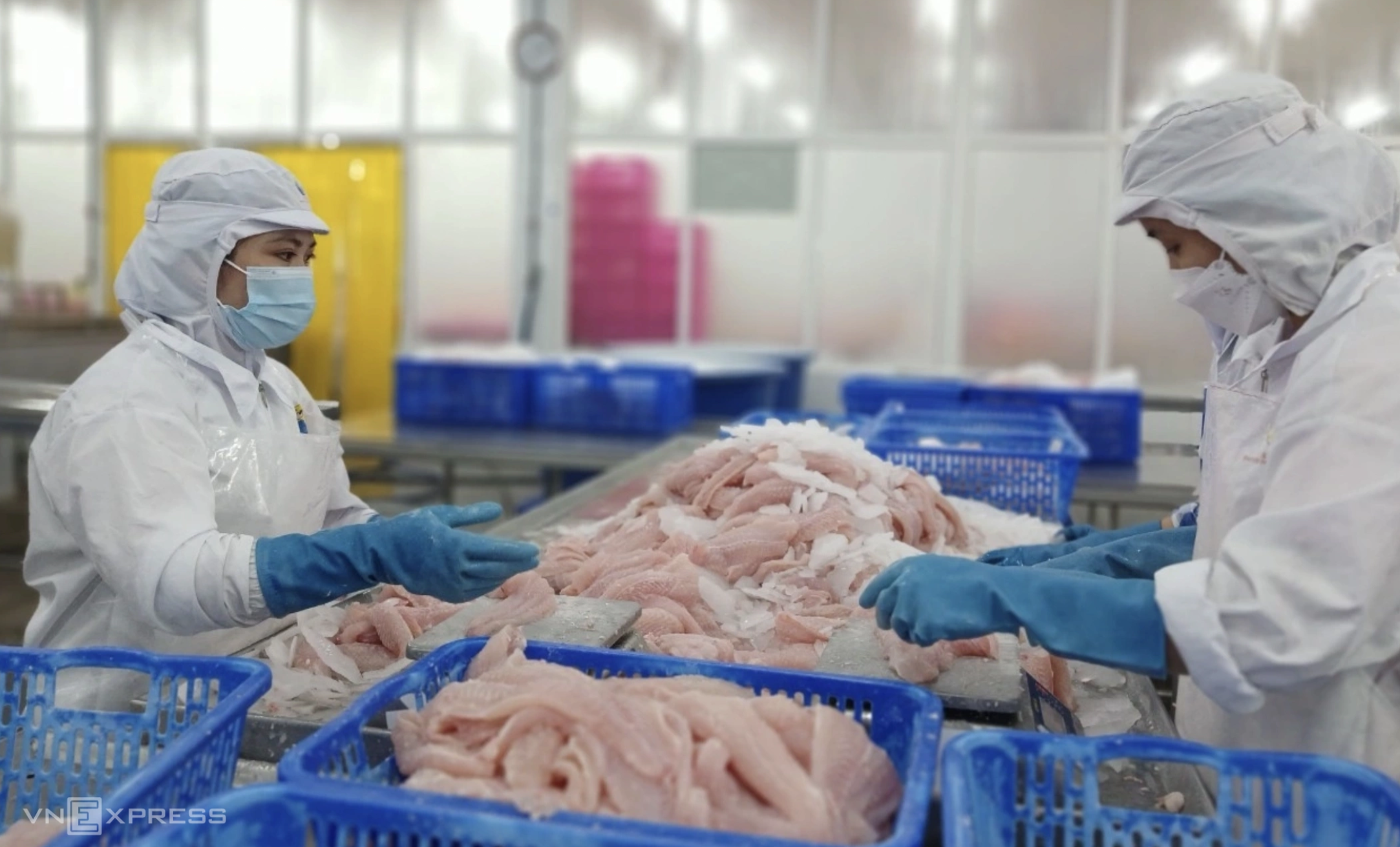According to the Vietnam Association of Seafood Exporters and Producers (VASEP), the US imported approximately 905 million USD worth of seafood from Vietnam in the first 6 months of the year, an increase of nearly 18% compared to the same period last year. In May alone, seafood exports to the US reached nearly 195 million USD, the highest level since the beginning of the year and a 61% increase compared to April. This period saw Vietnamese businesses accelerating exports to avoid new US tax policies.
However, after this surge, the US market cooled down. In June, seafood exports to the US decreased by nearly 18% compared to the same period last year, with shrimp down more than 36% and tuna down more than 40%.
"Many US importers are wary of risks arising from trade tensions, so they are limiting orders, reducing volumes, or only placing monthly orders," VASEP quoted a business as saying.
Meanwhile, China has become a bright spot. Over the past 6 months, Vietnam's seafood exports to this market reached over 1.1 billion USD, an increase of nearly 45% compared to the same period last year. For the first time, China has surpassed the US to become Vietnam's largest seafood importer.
 |
Workers sorting fish at Navico's fish processing plant. Photo: Thi Ha |
Workers sorting fish at Navico's fish processing plant. Photo: Thi Ha
According to VASEP, while China is increasingly tightening quality standards, its more stable trade policies have made it easier for businesses to plan production and sign long-term contracts.
VASEP believes the overall industry outlook is gradually recovering, with some large enterprises recording positive results. For example, Nam Viet Joint Stock Company (ANV), a major pangasius exporter, recorded revenue of over 73 billion VND in the first 6 months, a 96% increase compared to the same period last year and the highest level in a decade.
The company's net profit reached over 12 billion VND, a 9% increase, also the highest half-year level ever. A company representative said that this year, Asian and American markets have grown well, with China being a particular highlight. The company has already achieved more than 92% of its annual revenue plan and 71% of its profit target after just the first half of the year.
VASEP predicts that the trend of order shifting between markets will continue in the second half of the year as Vietnamese businesses proactively adapt to changes in tax policies, technical standards, and traceability requirements. In addition to deeper penetration into China and the CPTPP bloc, many businesses also aim to maintain market share in the US through "green" and sustainable production models, increasing deep processing content to add value.
The US has always been a premium market with good selling prices, but with increasingly unpredictable policy risks, Vietnamese businesses say they are forced to shift. Some companies have restructured their export markets, expanding to South Korea, Japan, the EU, and the CPTPP bloc. At the same time, they are also investing heavily in technology, cold chains, and traceability to increase competitiveness.
In the first 6 months of the year, the country's total seafood export turnover reached approximately 4.4 billion USD, an increase of nearly 7% compared to the same period in 2024. While showing signs of recovery compared to last year, this growth rate has not yet returned to the peak of 2022.
Thi Ha












